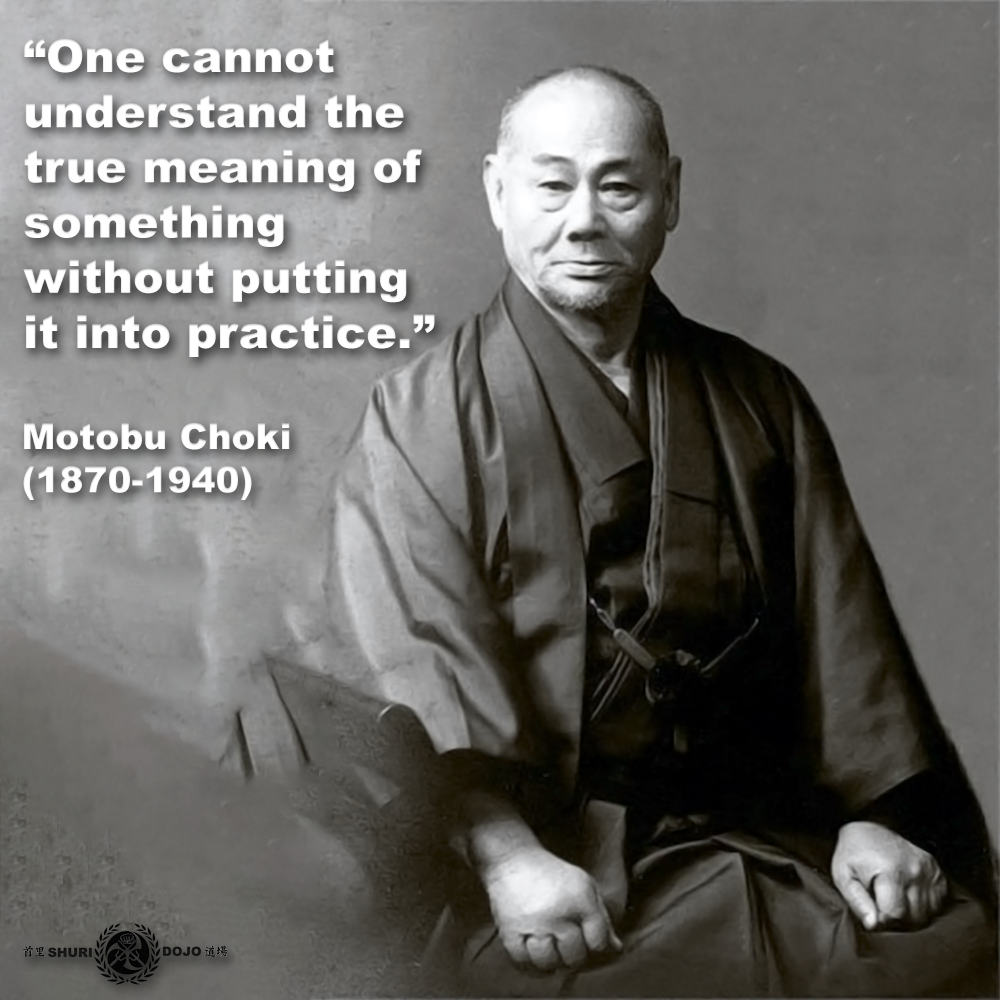
Kata was never meant to be used just to pass the next belt or simply practiced for aesthetic purposes. Kata should be practiced for the knowledge of the extremely effective techniques and principles upon which they are based, and practitioners should develop the ability to apply that knowledge.
.
Kata and sparring, often two words that don’t go together well in many dojo. However, both are essential elements of practice.
.
The kata were created to record the techniques, concepts and principles that past masters used themselves in actual combat. In most modern dojo, sparring is now entirely based on competitive karate and has little in common with the principles of classical kata, or the needs of self-protection.
.
Most dojo include some form of sparring in their syllabus. But the most commonly practiced is based upon the rules of modern-day competition. Sparring today is not the same as the sparring that was practiced in the past. In his 1926 book, ‘Ryukyu Karate Kempo’, Motobu Choki (one of Okinawa’s most feared fighters) wrote; “Kumite is an actual fight using many basic styles of kata to grapple with the opponent.”
.
Kata based sparring is very different to normal dojo/competitive sparring. The techniques employed tend to mean that the range is closer and the techniques more vicious. The attacks are ‘non-karate’, with the inclusion of grappling/trapping/throwing etc, this means that once an encounter has started – the fight rarely stops – there is no referee to interject.
.
Practitioners have freedom to employ techniques as they choose and to move freely between percussive and grappling responses.
.
The upshot of this is that you get two people exchanging techniques at close range and at speed – the benefit is that the techniques they are using are more suitable for self-defense than most competitive sparring techniques.
.
You could just practice sparring of course – however the most significant difference, has to be one of intent. The aim of sport orientated sparring is to win tournaments. The aim of kata-based sparring is to improve and enhance real combative skills (because that is the main aim of kata).
.
In its original form, the two person drills, the pragmatic element, came FIRST, the kata were created as a mnemonic tool to remember those combative drills.
.
Kata based sparring and competition based sparring are vastly different. So change things up, add kata techniques to your sparring practice, and step away from what you believe is a ritualized form, and apply the techniques of kata freely and with intent. ![]()
![]()
.
“One cannot understand the true meaning of something without putting it into practice.” – Motobu Choki
.
With thanks to Iain Abernethy
.
